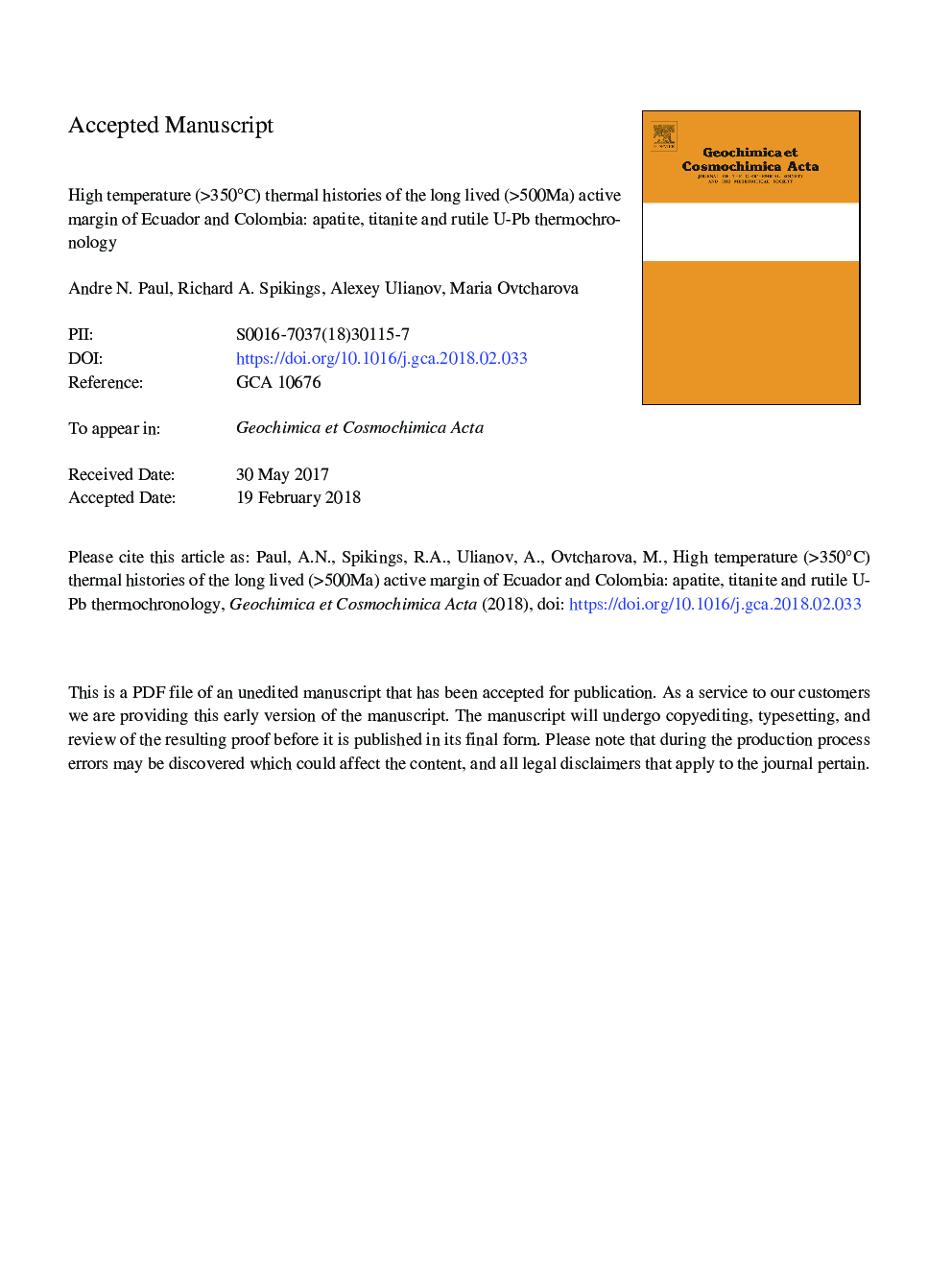| Article ID | Journal | Published Year | Pages | File Type |
|---|---|---|---|---|
| 8910798 | Geochimica et Cosmochimica Acta | 2018 | 62 Pages |
Abstract
Quantitative reconstruction of thermal histories can be a powerful tool to study numerous natural processes such as tectonic plate interaction, cratonic stability and extra-terrestrial phenomena such as asteroid ejection. A majority of thermochronological studies have focused on temperatures lower than 300â¯Â°C. Few previous studies have demonstrated that U-Pb data from apatite and other accessory phases can be used to recover thermal history information at Tâ¯>â¯350â¯Â°C. We present U-Pb data from apatite, to constrain the thermal histories of Triassic peralluminous anatectites from the Northern Andes between the temperatures of â¼350-550â¯Â°C. The accuracy of the thermal history models is assessed by comparisons with previous geological models, and comparisons with pre-existing and newly acquired U/Pb (titanite and rutile), 40Ar/39Ar (muscovite) and low temperature thermochronological data. This study also examines the feasibility of using a large, regionally dispersed apatite U-Pb data set to obtain continuous thermal history paths along a long-lived (>500â¯Ma) active margin. A second aim of this study is to further test the hypothesis that the dominant mechanism for Pb displacement through apatite is volume diffusion, as opposed to aqueous fluid interaction. The thermal history models derived from the Triassic anatectites exposed in the Andes of Colombia and Ecuador are entirely consistent with lower temperature thermochronological constraints, and previously established geochronological and geochemical constraints. They reveal and quantify trench parallel changes in the amount of Jurassic - Early Cretaceous extension, significantly bolstering and adding to previous tectonic interpretations. Confirmation of the utility of U-Pb thermochronology provides geologists with a powerful tool for investigating the high-temperature thermal evolution of accessory minerals.
Keywords
Related Topics
Physical Sciences and Engineering
Earth and Planetary Sciences
Geochemistry and Petrology
Authors
Andre N. Paul, Richard A. Spikings, Alexey Ulianov, Maria Ovtcharova,
